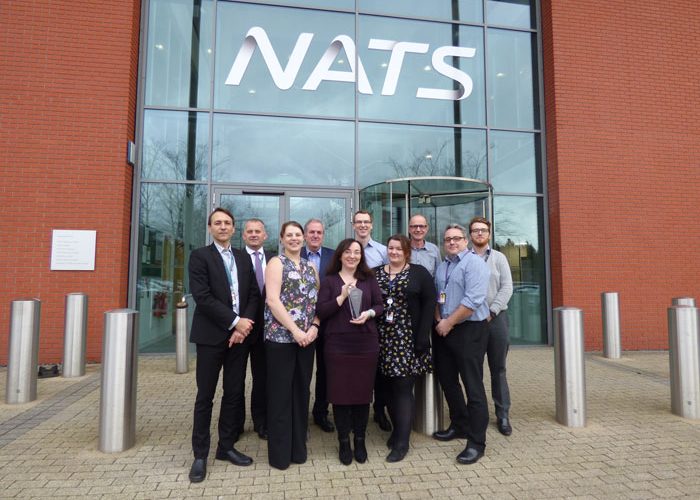Flight data helps plot a route to savings
Posted: 4 April 2013 | Ian Jopson, Head of Environment and Community Affairs, NATS | No comments yet
In a bid to save fuel and cut carbon emissions, NATS has developed a flight profile monitor tool. Ian Jopson, Head of Environment and Community Affairs at NATS, extols the virtues of the new technology…
Data is everywhere these days; from the huge tranches of minute information supermarkets collect on our buying habits, to the enormous databases insurance companies cultivate to help them understand and quantify risk. And in each case, it is the business with access to the richest and deepest data that is then best equipped to make the smartest decisions.


Data is everywhere these days; from the huge tranches of minute information supermarkets collect on our buying habits, to the enormous databases insurance companies cultivate to help them understand and quantify risk. And in each case, it is the business with access to the richest and deepest data that is then best equipped to make the smartest decisions.
That’s certainly what we’re finding at NATS, the UK’s leading provider of air traffic services and solutions. As an air traffic control organisation, the more we dig into our operational data the more ways we find to improve our efficiency and the service we can offer our customers.
No-where is that more the case than in our environmental programme where we’ve committed ourselves to looking at every aspect of what we do in order to identify opportunities for environmental improvements. Our goal is to improve the environmental performance of aircraft under our control by up to 10 per cent on average by 2020. This is a mighty challenge, but the detailed analysis of operational data is helping us measure our performance and identify new ways to meet that challenge head on.
Join us live: Shaping the Next Generation of Hold Baggage and Air Cargo Screening
Join us live for an insightful webinar on 11th December at 14:00 GMT, in collaboration with Smiths Detection, as we explore the strategic balance of operational efficiency, regulatory compliance, and sustainability in high-volume security environments.
This session offers a focused look into future-proofing your security strategy.
Key learning points
- Cost Reduction: Strategies to minimize bag travel time while simultaneously reducing operational costs.
- Regulatory Roadmap: Insights into the next wave of regulatory changes and their impact on future investment decisions.
- Sustainable Systems: Practical approaches to building sustainability into security systems and lowering the total cost of ownership (TCO).
- Scalable Solutions: Real-world examples of scalable systems supporting current airport growth and preparing for tomorrow.
Register now for expert insights, case studies, and actionable strategies on operational efficiency!
One of the areas we have been looking at is the opportunity to improve the climb and descent profiles of aircraft, aiming where possible to eliminate periods of level flight prior to an aircraft reaching cruising altitude, and thereby saving fuel and cutting carbon emissions. A flight that makes a continuous descent or climb simply burns less fuel and emits less carbon – an outcome that benefits everyone. But in order to establish a baseline performance and to enable regular monitoring, we had to develop a bespoke tool which would provide us with the data we needed on aircraft performance during each phase of flight – from airport push-back and taxi to cruise, and anything in between.
Nothing like this existed on the market, so after years of development and testing, a system that we’ve called Flight Profile Monitor was delivered and made available for operational use.
The Flight Profile Monitor is designed to use radar data to monitor the threedimensional flight profiles of individual aircraft and to then record which of those were achieving smooth, continuous climbs and descents. We also engineered it to be able to measure any individual part of the flight in order to provide us with the most granular data possible. For example, if we need Flight Profile Monitor to look in detail at just one narrow phase of flight – say continuous descents from 6,000ft to 1,800ft, it can. Alternatively it can provide a complete overview of an entire flight profile from ground to cruise and back to ground again. In doing so it has helped us to understand the characteristics of the aircraft under our control like never before.
In August 2011 we launched Flight Profile Monitor at our 15 major UK airport units, including Heathrow and Gatwick, in order to arm the teams there with the data they needed on their own continuous climb and descent performance. This meant that our air traffic control teams, which previously had little or no data about the environmental performance of the aircraft under their control, could then track their performance over time and highlight any opportunities to improve.
To begin with, this data was purely for internal use. The information produced went towards monthly reports to airport unit General Managers, and included a wealth of operational data on continuous climb and descent rates, details of level off locations, level off lengths and performance, broken down by airline, aircraft type, runway direction and even by air traffic controller shift pattern. So if a particular watch, for example, was achieving a greater number of continuous descent approaches, that data was made available and could help highlight techniques that could be shared amongst the other teams.
All of this allowed our teams to make real strides towards improving their own performance, but we knew that was only part of the answer. Any environmental initiative needs collaboration to achieve maximum results and we knew that there were considerable opportunities for us to use Flight Profile Monitor to work with the airports and airlines in order to fully realise the benefits.
In December 2011, at the Edinburgh Flight Operations and Procedures Committee meeting, it was agreed between NATS, BMi, BMi Regional, Loganair, easyJet, Ryanair and Edinburgh Airport that they would be the first participants of a fully fledged Flight Profile Monitor trial which would run for the next 12 months.
Over the course of the trial, it soon became clear that while certain aspects of the trial were going very well, there were other areas where obvious improvements could be made. For example, we identified that while departing flights achieved around 95 per cent continuous climb rate, only 55 per cent of arriving flights were achieving continuous descent approaches.
Without Flight Profile Monitor, this kind of data would have remained hidden from us, the airlines and the airport. So with focus from the trial along with improvements to the quality of the local radar station, between March 2012 and July 2012, we were able to use the Flight Profile Monitor data to pinpoint improvements and deliver a 20 per cent rise in the number of continuous decent approaches being achieved.
The outcome equated to savings of at least 800 tonnes of CO2 and 250 tonnes of fuel; worth £165,000 per year to the airlines. A huge win-win situation for everyone involved, with excellent feedback from the trial participants. “I’ve been quoting this work at Edinburgh as a great example of best practice,” said Martin Sisson, a pilot with British Midland Regional.
From an airport perspective, Norman Allan, Airside Compliance Manager at Edinburgh Airport Limited, added: “The output, along with the accompanying raised awareness and discussion amongst all parties, is extremely encouraging as we strive to grow our business whilst lessening environmental impacts.”
The Flight Profile Monitor demonstrates NATS taking an innovative approach in the original development of a new tool, but it has also shown how environmental data can be applied in practice and in collaboration across the aviation industry to deliver tangible environmental benefits.
All in all, it was great success – it has brought the airport, airlines and NATS into proactive and constructive discussion about environmental performance. But more importantly it has delivered a tangible outcome – saved fuel, reduced emissions and established a format for success that can now be replicated across the rest of the country.
There has been considerable interest from other airports and airlines keen to understand how Flight Profile Monitor data might be useful to them, something which we are obviously keen to pursue. The next step is to take the success from Edinburgh and build on it to deliver similar improvements elsewhere.
Biography
Ian Jopson has almost 20 years’ experience in the sphere of environmental aviation issues in Europe and beyond, working for the Civil Aviation Authority, NATS and an independent consultancy.
As the Head of Environmental and Community Affairs at NATS, Ian is responsible for driving forward a programme targeting improvements to operational CO2 emissions and a low carbon strategy for the NATS estate – his work has enabled NATS to be the first air navigation service provider to set operational CO2 targets.
Ian is currently a member of ICAO’s Committee on Aviation Environmental Protection (CAEP) and has provided advice to ICAO’s Group on International Aviation and Climate Change and the UNFCCC negotiations leading up to the establishment of the post Kyoto climate change targets framework. In Europe, Ian leads the environmental transversal programme in the Single European Sky ATM Research programme, SESAR.
The International Airport Summit is open for registration!
Date: 19 – 20 November 2025
Location: JW Marriott Hotel Berlin
At our flagship event of the year, we will dive into the future of airport operations, with expert-led sessions on passenger experience, innovative smart technologies, baggage handling, airside operations, data, security, and sustainability.
This is where global airport leaders come together to share insights, challenges, and real-world solutions.
Limited complimentary passes are available for eligible professionals – first come, first served!

















